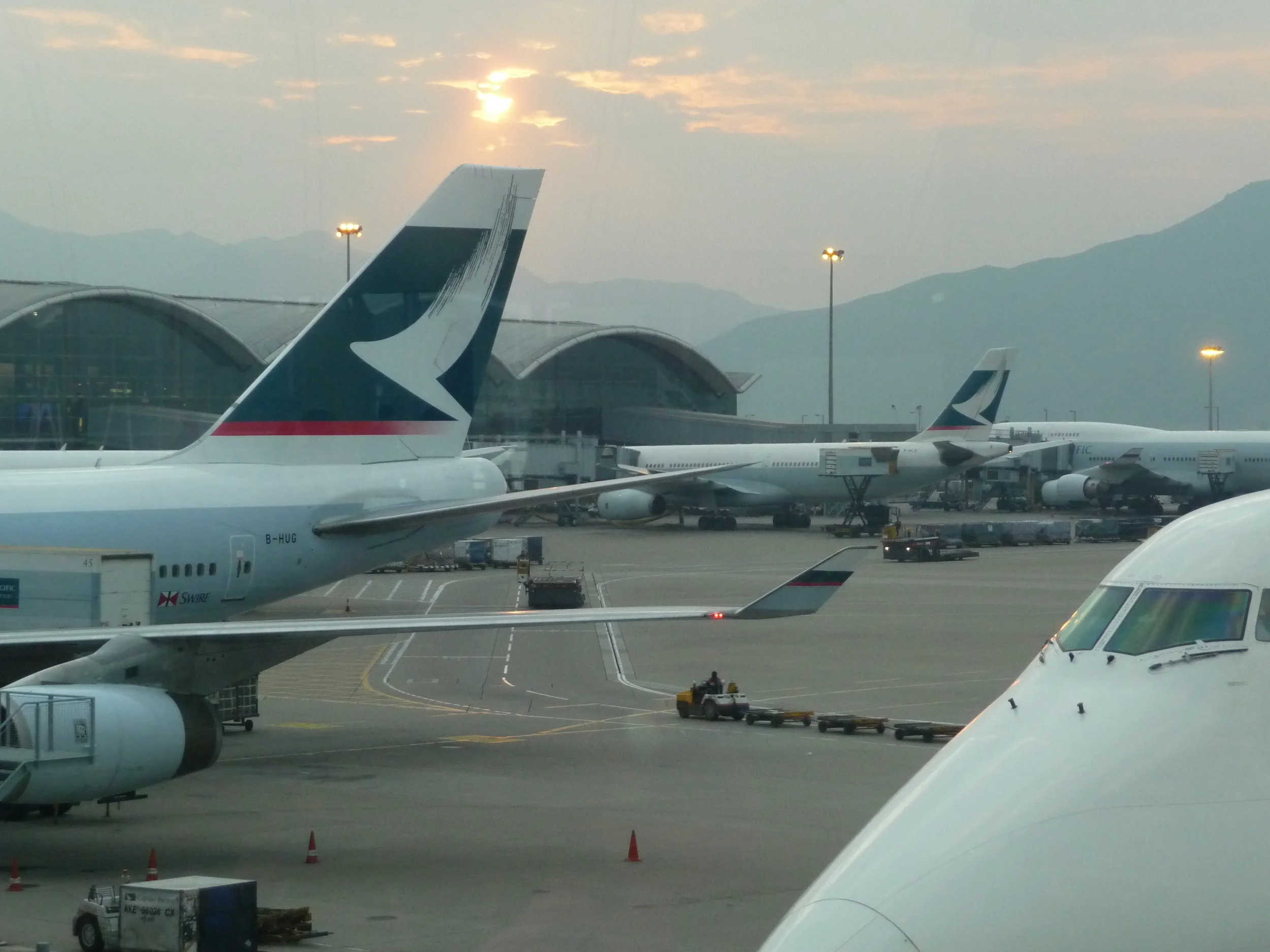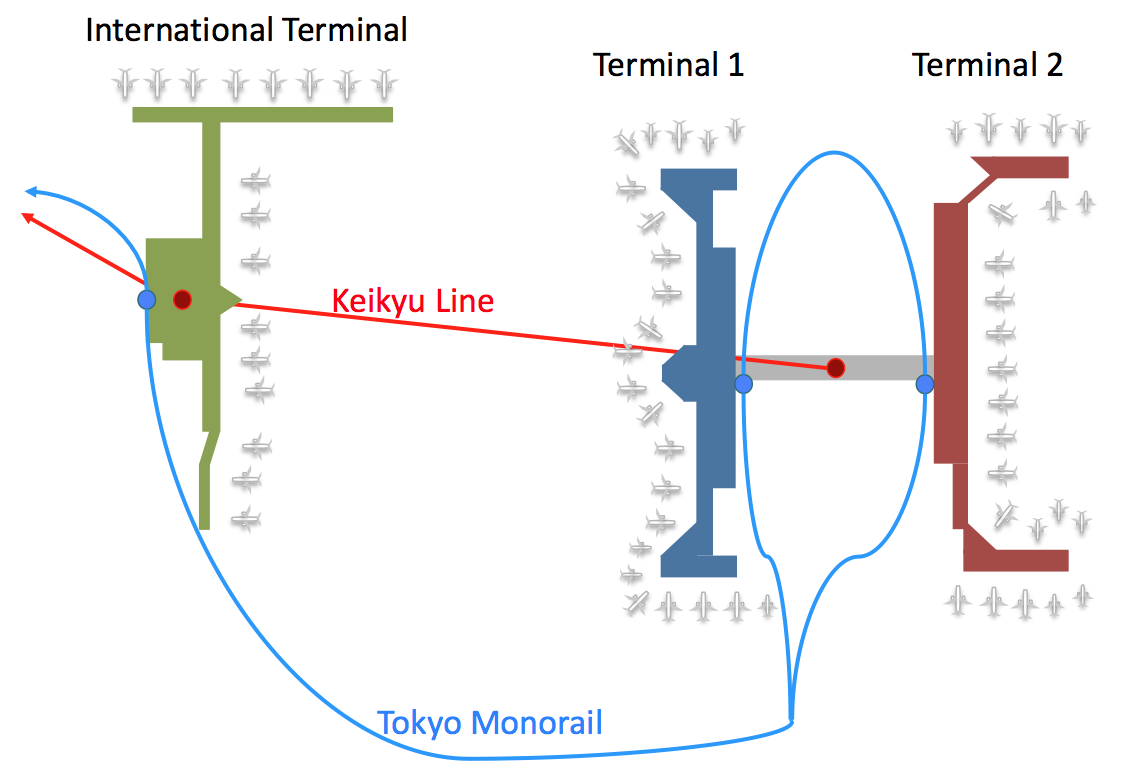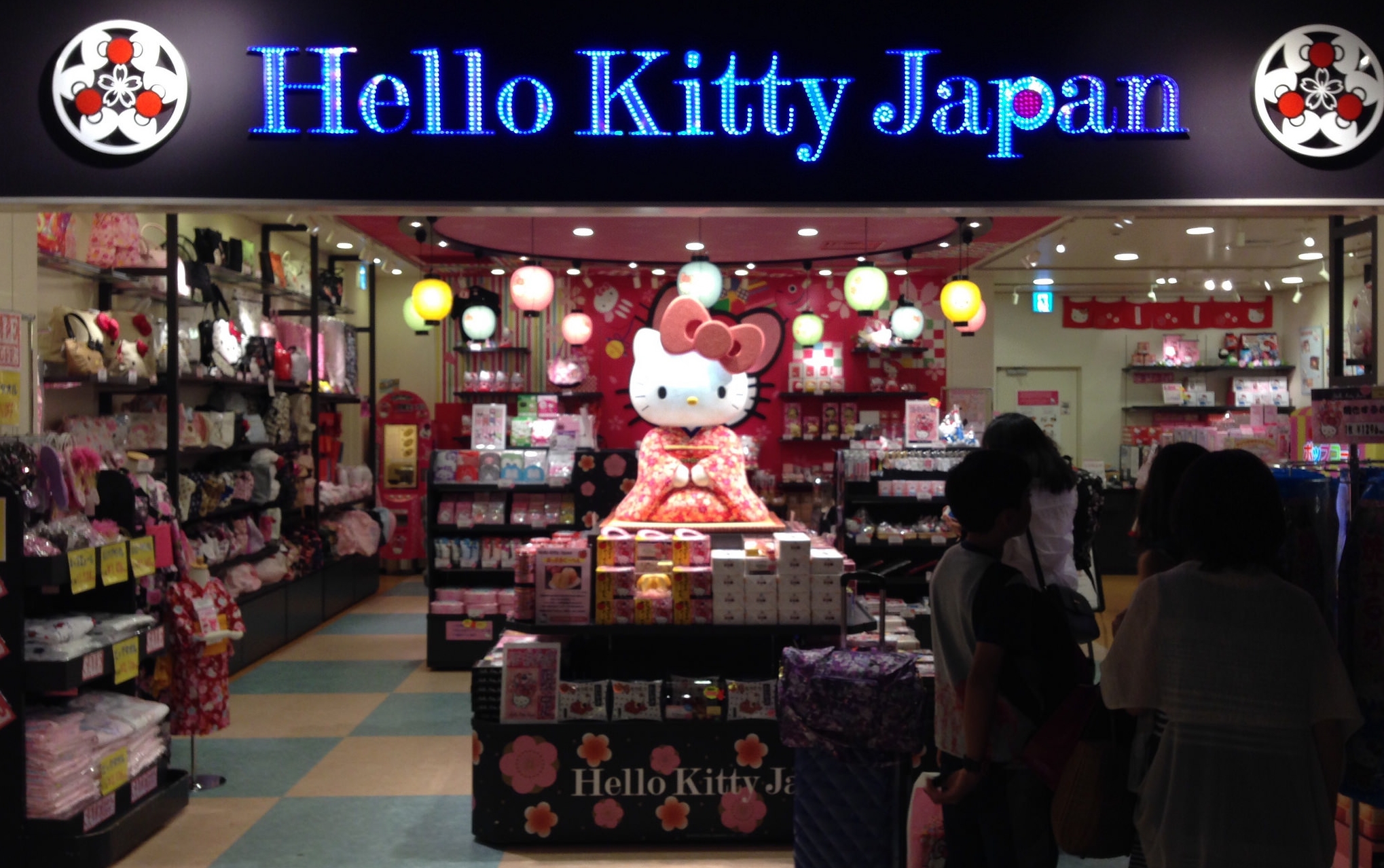Tokyo Haneda - HND
/Close-in convenience to the capital – and best-connected to all of Japan
Haneda Airport, located right on Tokyo Bay,was the city’s overcrowded all-purpose airport up to 1978, when Narita was opened and all overseas flights were transferred there, leaving HND to deal only with domestic flights. Improvements to the Shinkansen (high-speed rail) network blunted the need to improve the airport, but by the 1990s there was no doubt that substantial improvements needed to happen. Runways were added and extended, and terminals were reconstructed and expanded over the next decade to bring Haneda up to the world-class standard expected of a key East Asian airport.
With those longer runways, the improved range of modern aircraft, and the extra capacity now available, Haneda was reopened to long-range flights in 2010. But these flights were limited to East Asia and Europe, because the Japanese government did not want to change the competitive situation for Transpacific travel, where United and Northwest had substantial hubs on Japanese home soil at Narita, in competition with locally-owned Japan Air Lines and ANA-All Nippon. If lower-cost carriers from the USA were able to move their hub operations to Haneda, JAL and ANA would be at a disadvantage at their very home airport.
The US government didn’t care for Japan’s foot-dragging, but diplomatic pressure only yielded a handful of late-night arrival and departure slots – no good for making connections anywhere in Japan or Asia, and outside the operating hours of the Tokyo Monorail connection into the city…
Meanwhile, United Airlines formed a joint-venture with ANA, and American invested in and formed a partnership with JAL. In both cases, the pairs of carriers implemented code-share and revenue-sharing arrangements. These agreements locked Delta out of offering connections to the Japanese domestic market, and with them in place, Japan finally allowed daytime arrivals and departures from the USA to Haneda in 2016-2017.
Click to expand image.
In 2018, nonstop service from Haneda to North America is dominated by the Star Alliance (ANA, United, and Air Canada) and the oneworld alliance (JAL and American), with Delta flying only two routes and Hawaiian coming in from the Islands. 14 daily flights are available – still well below what is available from Narita.
JAL and ANA (and their subsidiaries) cover every city of reasonable size with a modern airport in Japan directly from Haneda. JAL, ANA, and their respective partners offer a growing number of flights to cities in Korea, China, Taiwan, and Southeast Asia from Haneda, but those are aimed at Japanese business and not necessarily timed for smooth connections to North America. Despite the improvements to the airfield and terminals, there just isn’t enough capacity at HND to replicate the intercontinental connecting hub at Narita.
Customs Arrival and Transfer Process
Coming off your aircraft from overseas, you’ll follow the ramp down to Level 2 and then take corridors with moving sidewalks along the concourse to the central portion of the terminal building. If you are connecting to another international flight and don’t want to leave the airport, look for the “International Connecting Flights” sign and walk into that area: you’ll go through a security check and then be directed back up to the 3rd floor for the departure gates.
Instead, if you are entering Japan, you’ll go to the immigration hall and its passport-check counters, where you’ll get your book stamped and be thermally scanned just to make sure you aren’t experiencing a massive fever (all of Asia is jumpy about viral diseases since the SARS epidemic). Assuming you’re healthy, you’ll walk though to the baggage claim carrousels, pick up your luggage, and as long as you don’t have anything to declare like tens of thousands of dollars in cash, head straight out into the Arrivals Lobby.
Where you go next depends on your next mode of travel: if you are taking a domestic flight and have your onward tickets, turn left and drop your luggage at the airline counters. Just beyond those counters is a security check: you’ll pass through that and then head downstairs for a shuttle bus which will take you to either Terminal 1 (JAL) or Terminal 2 (ANA).
If you’re taking the train, monorail, or bus, go forward to get your tickets or Suica stored-value card, and then follow the signs to get to your desired transport.
Navigating the Airport
There are three terminals in operation at Haneda: Terminal 1 is for domestic flights by Japan Airlines (JAL) and its subsidiaries. Terminal 2 is for domestic flights by ANA-All Nippon and its subsidiaries. And the International Terminal is as its name implies, for all flights outside of Japan by all airlines, including JAL and ANA.
Each of these terminals is laid out in a similar linear fashion, with check-in counters and security checks on the 3rdfloor, and a long row of gates running the length of the terminal. There are “stubs” of gates on the far ends of each building.
Image by Keiichi Yasu via Flickr, CC 2.0 license
Also, each terminal has a substantial pre-security gallery of shops, restaurants, and open-air observation decks on the 3rd floor and up. These are a real treat for visitors and kids especially, compared to the fortress-based setups of modern North American airports.
Image by Twang_Dunga via Flickr, CC 2.0 license
Family-friendly Amenities and Hidden Gems
Japanese airports are some of the most kid-friendly in the world, even for families who are only visiting and not flying out that day. If your children enjoy anime, cartoon characters and mascots, they’ll find plenty to be delighted with. If they enjoy ninja culture and the elements of Japanese history, likewise there will be plenty for them to engage with. And of course if they like airplanes… Haneda has three of the best observation decks to be found anywhere in the world, and they’re all free, and open from early morning until late at night. The ones in Terminals 1 and 2 even have cafes right there, so the children don’t have to miss a moment of the action.
Post-security, in the International Terminal, there are two “kids’ corners” near gates 106 and 146 which are mostly for toddlers to move around in and burn energy without getting underfoot: there are low, padded benches surrounding each zone of Very Clean Floor and a little bit of equipment to climb on. The same facilities can be found in Terminal 1 near gates 9 and 16, and in Terminal 2 by gates 52 and 72.
Restrooms
In the International Terminal, all stalls are extra-wide so you can bring a rolling suitcase in with you or manage your child. The doors fold in on themselves, too, to make it easier to get in and out. Each restroom also has one or two “multipurpose toilets” which include a changing table and even a small shower, which would be good in a pinch for a baby or toddler who need more-than-usual cleaning up.
Adjacent to most of the restroom clusters are also dedicated nursery rooms, which include washstands, hot water, and private booths.
On the domestic side, similar design is at work in the restrooms, with a “multipurpose toilet” available in each. In Terminal 1, there are five nurseries in the secure zone; in Terminal 2 there are six. There are also nurseries and “multipurpose toilets” throughout the public zones of all three terminals.
International Terminal - Image by Granpark407 via Wikimedia Commons, Public Domain
Food and Shopping
Much the same as at Narita, you’ll want to budget extra time for your departure at Haneda just for the opportunity to explore and indulge the truly impressive shopping and dining areas pre-security.
Terminal 1 - Image by RGB256 via Wikimedia Commons, CC 3.0 license
On the domestic side, the central core of Terminal 1 (JAL) is a seven-story tall shopping center, stretching from the basement level all the way up to the observation deck! Be sure to check out the Tomika model-train shop on the 2ndfloor, the fan store for baseball’s Tokyo Giants on the 3rdfloor, and “Haneda Air Shop” on the 1stfloor for aviation toys and gifts. Likewise, Terminal 2’s central public area from the 3rdfloor up to the 5thfloor observation deck is lined with shops and places to eat.
International Terminal - Image by MIKI Yoshihito via Flickr, CC 2.0 license
In the pre-security areas of the International Terminal, the entire 4thfloor is a giant food court called “EDO KO-JI” (35 different restaurants and fast-food counters, including favorites like Yoshinoya, Katsusen, Tsurutontan, and MOS Burger), and the 5thfloor is about half retail space called “TOKYO POP TOWN”with the other half being the observation deck. The 5thfloor is the place to go for Hello Kitty and other Sanrio goods; they also have a toy store (Hakuhinkan Toy Park) featuring a massive slot-car race track that shoppers can play with!
Image by Bert Kimura via Flickr, CC 2.0 license
For both of the domestic terminals, once inside the secure zones, there are a reasonable number of cafes and fast-food counters spread along the concourses, and general travel-goods shops (I’d even go so far as to call them convenience stores) for any last-minute needs.
Inside the International Terminal’s secure zone, however, the shopping choices are concentrated toward the center of the building, and tilt decidedly toward the same luxury goods and expensive designer brands you see in every airport around the world. In the northern concourse (gates 141-148) and the southernmost gates (105-108) there are no options available, not even a bookstore, so be sure to eat and make any final purchases before walking out to your aircraft.
Image by toshinori baba via Wikimedia Commons, Public Domain
Connectivity
Haneda is connected to Tokyo’s mass-transit system via two lines, the Tokyo Monorail and the Keikyu Line, but neither plugs directly into the city’s main grid, and so a few connections are necessary to reach the main tourism and hotel centers. You’re always well advised to pick up a Suica stored-value cardright at the airport before setting out, as it’s the easiest and cheapest way to access Tokyo’s transport network.
- The Keikyu Line has two stops after clearing the airport to reach Shinagawa Station on the Yamanote Loop Line: connect here to reach key western centers on the Loop like Shibuya, Harajuku, Shinjuku, and Ikebukuro.
- The Tokyo Monorail flows along the waterfront with a great view for two stops after leaving the airport, before reaching Hamamatsucho Station on the Yamanote Loop Line. Connect here for eastern and central stations on the Loop like Shimbashi, Tokyo (downtown), Akihabara, and Ueno.
Image by DozoDomo and Tokyo Monorail Co, Ltd. via Flickr, CC 2.0 license
The Tokyo city government is working to build out a metro connection from downtown to Haneda in time for the 2020 Olympics, and extend operating hours of the trains until well into the night and early morning. The extra connectivity will make Haneda even more appealing to North American visitors.
WiFi is free in the public and secure areas of all three terminals, although in restaurants and bigger shops the free signal may not be available.
Lodging
If you are making an international connection that needs more than a few hours (or overnight), or if you are going to have an early morning departure, you might consider using one of the transit hotels on the airport property. Each terminal has one directly attached to the main building, and the one at the International Terminal actually has a section insidethe secure zone.
- International Terminal – the Royal Park Haneda
- Terminal 1 – First Cabin
- Terminal 2 – Haneda Excel Hotel Tokyu
And just off the property is the Hotel JAL City Haneda, which is also going to be familiar with travelers from overseas.
Haneda Tower Complex photo by Alex Len via Wikimedia Commons, CC 3.0 license
See also...
Our guide to Tokyo's Narita Airport
Fun, Cheap, and Free Family Travel Activities in Tokyo
What Your Kids Should Eat in Tokyo
Impressions - Harajuku Neighborhood
Impressions - Meiji Jingu Shrine
Haneda Airport's International Services home page (in English)































